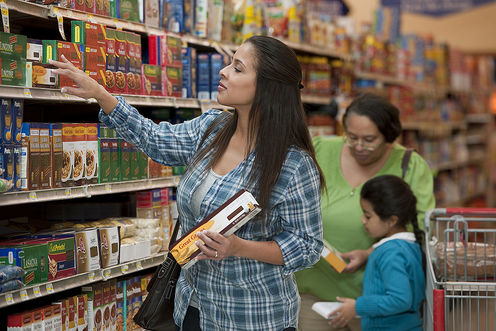
Politicians and scholars sometimes cast obesity as a problem that largely afflicts the poor. But as most obese adults aren’t poor and most low-income adults aren’t obese, this is a misconception.
As a researcher who looks into these demographics, I find the intersection of obesity and income among Americans to be much more complex than commonly held myths suggest.
Left unaddressed, misunderstandings about the links between poverty and obesity can end up justifying anti-poverty budget cuts. In light of the Trump administration’s efforts to slash spending on the Supplemental Nutrition Assistance Program, widely known as food stamps, I would like to clarify the connections between obesity, income and SNAP.
Most people with obesity aren’t low-income
The more than 33 percent of U.S. adults who have a body mass index (BMI) – weight in kilograms divided by the square of height in meters – of 30 or higher meet the common definition of obesity. For instance, someone who is 5’9″ and weighs at least 203 pounds would be obese.
Only 20 percent of these adults with obesity are considered poor enough to qualify for SNAP benefits, such as belonging to a family of four living at 130 percent of the poverty line on an annual income of about US$31,600.
In fact, 41 percent of adults with obesity belong to households earning at least 350 percent of the poverty line – more than $86,100 a year.
Food stamps
Some critics, like Rep. Steve King, an Iowa Republican, assume safety net programs such as SNAP are making the obesity epidemic worse among low-income Americans instead of better.
But there’s little research backing up that theory, and the program itself rejects it.
Some studies have found that SNAP participation increased likelihood of obesity among women, but not men. Middle Tennessee State University economist Charles Baum estimated in 2007 that SNAP benefits increased the likelihood that a woman would be obese by 2 to 5 percent.
However, other studies have found no link between SNAP and obesity. Some research has even found evidence that food stamps decrease the likelihood of obesity.
Different trends for men and women
As you drill into the data, it gets even harder to generalize about the links between obesity rates and income. The percentage of Americans in a given group that is obese, or the obesity rate, can vary widely according to factors like gender and ethnicity, as well as class.
Obesity rates are highest, at 42 percent, among low-income women regardless of ethnicity. Poor women of color are even more likely to be obese, according to the Centers for Disease Control and Prevention, which tracks these rates for non-Hispanic whites, non-Hispanic blacks and Mexican-Americans. Some 54.7 percent of low-income black women are obese versus 39.2 percent of poor white women, for example.
The picture is very different for men, with less variation between income and obesity across racial and ethnic lines. The share of men living in poverty who are obese stands at only 29.2 percent, and they are less likely than men with higher income levels to have this condition.
Another difference between male and female obesity rates: Men of color with incomes well above the poverty line are significantly more likely to be obese. But that is not the case for white men.
What’s at stake?
The Trump administration wants to cut 25 percent of SNAP’s budget over the next decade. There’s a lot at stake with this proposed spending cut, which would total $193 billion and could hurt some of the most vulnerable Americans who have a wide array of BMIs.
Nearly 42 percent of SNAP households eke by on incomes at or below half the poverty line. For a family of four, that amounts to $12,300 or less. What’s more, almost two-thirds of the Americans benefiting from SNAP are children, elderly or people with disabilities.
Stereotyping low-income Americans and criticizing safety net programs won’t do anything about the national obesity epidemic. Instead, we need to encourage the government to do more to improve American health across the board.
![]()
Tasia Smith does not work for, consult, own shares in or receive funding from any company or organization that would benefit from this article, and has disclosed no relevant affiliations beyond the academic appointment above.